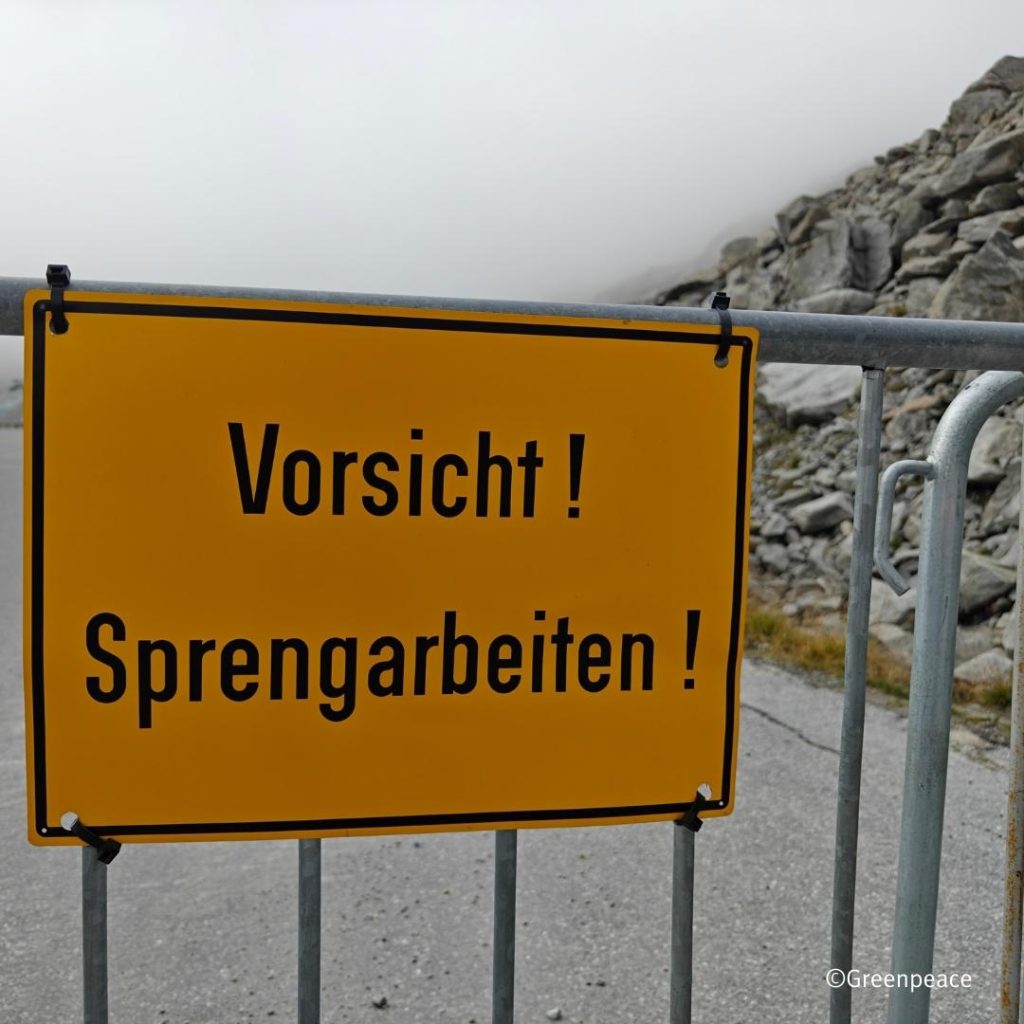Greenpeace research uncovers: Construction projects are being waved through on Austria's glaciers

A Greenpeace investigation shows: The glaciers in Austria are unprotected. If a ski resort applies for a new slope or a drag lift, for example, the project is usually waved through by the authorities. Whether nature will be destroyed in the process is usually not checked sufficiently. According to research, this was the case in 13 of a total of 14 construction projects submitted in the last six years. Together with biodiversity researcher Franz Essl, Greenpeace is calling on the federal states to extend glacier protection and completely ban new construction projects on glaciers.
Greenpeace spokesperson Ursula Bittner: "Glaciers are considered untouchable in Austria as long as there is no economic interest involved. For a new slope here and a snowmaking system there, both eyes are turned."
Greenpeace has looked through all construction projects submitted since 2017 in the databases of the Federal Environment Agency that were subject to an environmental impact assessment (EIA). In a total of 14 cases, an assessment was only ordered once - and this project has since been withdrawn by the project applicant. All other projects were approved without consideration for nature. These include the mega construction site in Sölden uncovered by Greenpeace and the projects on the Kitzsteinhorn in Salzburg. Although there are various laws at federal and state level that are intended to protect glaciers, various exceptions have been made. For example, in order to be able to expand ski resorts.
"The laws have been bent and are therefore ineffective," says Bittner.
Another weak point in glacier protection: the current federal law (EIA Ordinance) does not protect the entire glacier. The apron and the moraines, some of which also consist of glacier ice, are excluded from the outset.
Biodiversity researcher Franz Essl: "This is a fatal mistake. The apron and the moraines are not only a habitat for many endangered species. Dredging and blasting here will also destroy a natural protective shield against mudslides and rockfall."
This is because the plants growing here, such as various species of saxifrage, solidify the soil and bind the water. However, construction work is increasingly taking place in this glacier area.
"Instead of protecting only parts of the glacier, the entire glacier area must be placed under legal protection," says Essl.
Comprehensive glacier protection would have been included in the EIA amendment from 2021, but was deleted.
Together with Essl, Greenpeace is calling on the federal states to extend glacier protection and to place the foreland and moraines under protection. It is also clear to the environmental organization:
"Glacier protection must be credible in future, without exception. Dredging and blasting work on glaciers must be banned. Instead, it must be ensured that ski resorts away from glaciers are preserved. This includes comprehensive climate protection, which winter tourism must also take on board," says Bittner.






